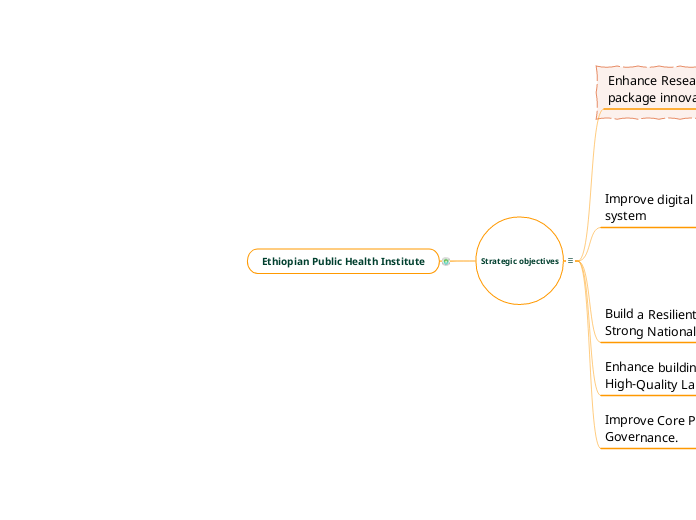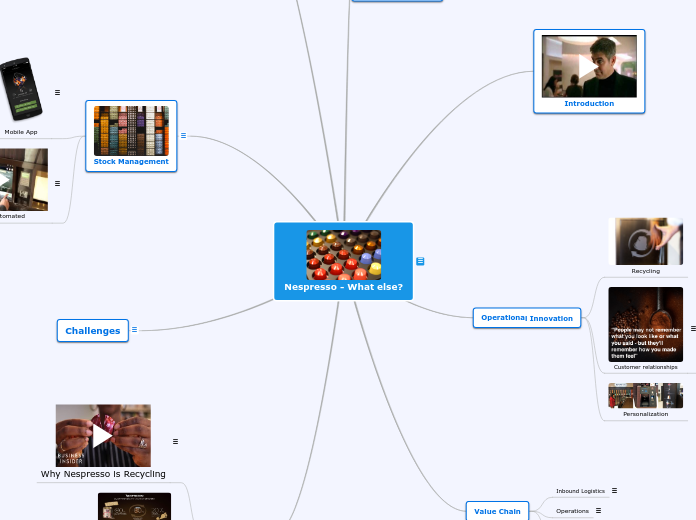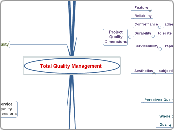Ethiopian Public Health Institute
Strategic objectives
Strategic Objectives are courses of action it has a high level (Impact & Outcome) result statements that indicate visualizing the institute's Vision or show what the institute needs to be achieved, and it will be measured through target stated under performance measurement indicators.
Improve Core Public Health Capacities for Proactive Governance.
Strategic result will be Advanced Capacities and Enabling Environment for leading public health position
- Public Health Capacity development is acquiring sustainable human skills and knowledge, dynamic and robust organizational structures, efficient resource management, and having commitment at all levels in public health settings to ensure improvement in health and other sectors for sustaining and multiplying health gains. This strategic objective designed to significantly contribute towards the realization of the institute's vision through public health capacity development in an effective and efficient way, creating an enabling environment and engaging relevant stakeholders.
- In line with this, the institutional leadership and governance system works on mobilizing adequate resources and utilizing them efficiently, investing in state-of-the-art infrastructures and human resource development, maintaining motivated and skilled human resources, establishing robust information communication technology platforms. For this, the leadership emphasizes engaging the community, fostering public-private partnerships, and advocacy for raising government public health spending share and the effective use of grant funds.
- Furthermore, the leadership plays a crucial role in strengthening national, regional, and international collaboration and partnership with stakeholders and partners who work in public health issues to address the Institute’s needs and priorities. It also ensures transparency and accountability through effective, efficient, equitable, accessible, safe, and sustainable service provision in health and nutrition research, public health emergency management, and laboratory quality improvement programs for building public trust and satisfying the general public.
- The key functions interconnected in the framework are Leadership & Governance, Organizational structure and Reforms, Workforce development, which consists of Program implementation and follow-up, s, Information communication, Financial Resource, and Partnership alongside Country specific policy.
- These key capacity development functions are categorized into three levels of capacity categorize into
- the enabling environment (often called system-level capacity),
- the organizational level capacity, and
- the individual level capacity.
Any effort at assessing capacity and developing capacity-building plans needs to take into account these three levels of capacity to have interrelated perspectives. The eight strategic key functions under Core Public Health Capacity Development are highly interrelated and mutually interdependent that addressing them comprehensively will have a synergistic effect.
Enhance building sustainable and resilient laboratory system for High-Quality Laboratory Services.
Strategic result will be sustained and resilient quality laboratory system and services.
- Sustainable quality laboratory service is a crucial part of patient care, public health research, technology transfer, and public health emergency management. The health sector has been working towards improving the quality of laboratory services through capacity-building efforts, implementation of quality laboratory management systems, infrastructure development, and enhanced support for accreditation to international standards. While the further expansion of laboratory infrastructures at all tiers of the national laboratory system remains to be one of the priorities of 3rd SPM, emphasis will also be given to promoting the quality and accessibility of laboratory services through strengthening the supply chain and equipment management systems including the provision of preventive and curative equipment maintenance services, introducing innovative technologies, appropriate deployment of qualified human resource and scaling up the implementation of Laboratory Information System (LIS).
Build a Resilient Public Health Emergency Management for Strong National Health Security
Strategic result will be Protected and Treated General Community from Public Health Risk and Emergencies
- The unified definition of resilience by the UN is “the ability of individuals, households, communities, cities, institutions, systems, and societies to prevent, resist, absorb, adapt, respond and recover positively, efficiently and effectively when faced with a wide range of risks, while maintaining an acceptable level of functioning and without compromising long-term prospects for sustainable Leadership and Capacities development, peace and security, human rights and well-being for all”. Therefore, public health emergency management resilience can be defined as the capacity of health actors, institutions, and populations to prepare for and effectively respond to crises; maintain core functions when a crisis hits; and, informed by lessons learned during the crisis, reorganize if conditions require it.
- An emergency can be designated as “a type of event or imminent threat that produces or has the potential to produce a range of negative health consequences, and which requires coordinating action, usually urgent and often non-routine” This includes pandemics, epidemics, and disasters (natural and technological), as well as those involving violence and conflict, which can often become protracted. Primary health care has an essential role in preventing, preparing for, responding to, and recovering from any emergency.
- Therefore, Resilient PHEs actions relay around the PHEM cycles: Prevention, Preparedness, and readiness, Response, Recovery, and transformation: in reality, these PHE cycles may overlap each other and over emergency phases (Pre-emergency, During-emergency, and post-emergency because of public health emergency dynamics behavior) also it requires capacities of public health emergency management resilience cover all phases of public health emergency management.
- The cycle of Prevention aims to strengthen early warning system (event-based or indicator based i.e. both integrated disease surveillance and laboratory-based surveillance) revised the list of re portable diseases, potential risk screening of travelers, enhance digital information management of multi hazards (infectious disease outbreaks, biological, chemical, radio-logical and environmental) and redefine the digital reporting tool (DHIS-II), Surveillance data analysis and interpretation, rumor collection and verification, Provide feed-back to facilities and regions, finally, risk communication will be held. The cycle of preparedness and readiness include assessment of an institutional capacity (resources) and capabilities (such as training and credentialing) to respond: building and maintaining the necessary capacities and capabilities: testing them in exercises and real events: and reporting on the response in after-action reviews, ensuring that lessons learned are incorporated into EPRP and VRAMS.
- During-emergency Response cycle starts with early detection and activation of EOCs or establishing an incident-management system that has modular, scalable, and flexible teams: establish rapid response.team and Deploy to Field (include medical team): preparation of reporting templates & case definitions, and rapid assessment/investigation of the outbreak, Confirm the outbreak, identify all cases and contacts, detect patterns of epidemic spread, estimate the potential for further spread, maintain essential health services will undertake.
- Post-emergency phase there will be a shrink in the whole livelihood means and the health status of the people, to overcome this recovery, rehabilitation and transforming initiatives will commence.This strategic objective incorporates multi-sectoral coordination, and collaboration mechanisms to carry out the following characteristics: all-risk planning (plus hazard-specific planning where necessary): all stakeholder approaches (prepared the resilient communities able to respond to risk at the local level): and a comprehensive approach: includes risk prevention/mitigation, preparedness, detection (when communicable diseases involve), response and recovery. Finally, improving the health security by tackling public health and medical emergencies caused by natural and man-made disasters, conflicts, recurrent and unexpected disease outbreaks, nutritional emergencies road-traffic accidents, flooding, chemical spills, and new health threats in line with relevant national legal framework and policy guidance to Ensuring health security of the country is the destination of this strategic objective.
Improve digital health data science, analytics, and information system
strategic result will be : Improved digital health data science, analytics, and information system.
- The basic functions of this strategic objective are creating and strengthening health data repositories and hubs, strong data governance, and data exchange, data interoperability and integration, data security systems, health data analytics, and visualization hubs, and other applications, data curation, and standardization, and enhance digital health and health information system strategies of the country. It encompasses identifying relevant data sources and making them interoperable, establishing and managing data repositories and securities, putting in place data governance standards and regulations, enhancing standard data exchange, applying robust data analytics tools and methods on national priority health issues. by applying advanced health data analysis and basic concepts of data science such as artificial intelligence, machine learning, and data mining it intends to discover useful patterns and natural clusters in health data, to build robust models that are capable of predicting future events for formulating proper decisions to measure health progress of the country (GTP-III, HSTP-II and SDG indicators) and policies to be taken accordingly.
- The health data repository and governance function include archiving all health and health-related countrywide available data with their respective data sources and institutions, data standards, and regulations, building state of the art data systems and capacities to support national digital health and health information system strategies. Ultimately this improves data availability, accessibility, interoperability, and re usability of data in the country using digital technologies, dashboards, and visualization tools, to various users and actors including public/citizen, clients/patients, health care providers, health care managers, researchers, academic institutions, donors, implementing partners and other health sector stakeholders.
- This objective supports EPHI’s burden of disease foundation and collaborative efforts to play a leading role in Africa through the application of demographic methods, health metric science, health informatics tools, and other methods. This burden of disease at national, regional, zonal, and district levels is comprehensive and comparable quantification using available and accessible health and health-related data in collaboration with the ministry of health, in-country universities, and research institutes. These efforts are aiming to show health improvements in the country and across regions and cities; to show health inequalities in socioeconomic, population, and demography, and access to health care across regions and cities and districts.
- Activities in this strategic direction include giving support to regional health bureaus, regional public health institutes, in-country health, and demographic surveillance systems to capture all health and health-related data from multiple sources engages health data actors, ensures data exchange and security, establishes data repositories, following data governance standards and regulations, create automated data systems, provide regular updates, and manage and analyze the data.
Strengthen National, Sub-National and Local Burden of Diseases Estimate Using Health Metrics Measurements
Advance Public Health Data Science Computational Methods, Statistical and Mathematical Modeling and Visualization Techniques
Enhance National Health Data Repository, Data Security Systems and Strong,Data Governance Systems and Maintain Database Interoperability
Major Activities
- Create a national and continental health data hub/data repository with data backup and recovery
- Enhancing advanced data infrastructures and data security systems (Standard data warehouse (ICT infrastructure) development and building standard data security, backup, and recovery system)
- Mapping and archival of prospective & retrospective data sets at national & sub-national level that includes mapping all possible data sources, establishing communication, follow-up, creating sustainable systems, and using secured electronic data-sharing platforms
- Digitizing hard copy documents and making them ready for reuse - Developing metadata for archived data sets, catalog and index health and health-related data using standard systems on RTDS enhances the open data system for the visibility of data sets to the public and encourages data use trends of the country.
- Digitization/automation of data systems and regular update with data dashboards
- Ensure data governance (data sharing protocols/data sharing regulation) to enhance open data system and open data access to advance open research landscape, improved research integrity, innovation, and discovery (FAIR Principle) Ensure the implementation of open data access system through the health system and ensure the implementation of standard data collection tool development & ensure its integrity throughout the process
- Make health information systems interoperable and interconnected with interoperability architecture within EPHI and across the region. (Developing real-time case-based surveillance system and health information system interoperability layer)
- Providing technical support, Capacity building, and technology transfer among different data actors
Enhance Research, evidence synthesis, and production package innovation.
Expected Strategic result will be Scientific evidence-based information/knowledge that will be translated into policies, programs, public education & knowledge, product packages, and products.
The need for research-based knowledge to inform health policy and practice is a critical national public health concern. Knowledge generated through health research has the potential to improve health outcomes, promote service delivery and strengthen health systems functioning. However, there is inconsistency to translate evidence into health policy and practice. The main problems for limited evidence-informed health policy in Ethiopia are, evidence generation has limitations to address policy demand, existing evidence is not consistently and properly analyzed or synthesized for policy purposes.
Despite burgeoning interest in this know-do gap, the translation process remains slow, haphazard, and unpredictable, resulting in reduced health gains vis-á-vis societies’ investment in research Making better choices to come up with effective outcomes among alternatives requires the best available evidence. Therefore, this strategic objective is designed to address these challenges. Evidence generation for health is a systematic process of study regarding a particular Health and health related issues or a problem using well-known scientific methods to describe, explain, predict, and control the observed phenomenon for the advancement of knowledge to solve problems and improve the health status of people. The ultimate goal of the evidence generation through the research process and evidence syntheses will help improve the well-being of the population in an equitable approach or to use this knowledge to propose interventions and policies, based on scientific evidence results. Evidence generation pass through many steps, including prioritizing research agendas (i.e. gap identification, formulate scientific procedures (writing research proposals), and mobilize resources), conduct the actual researches or surveillance (data collection, data analysis, and technical report writing), evidence syntheses in the form of the guideline, evidence brief and systematic review,(prepared using different peer-reviewed journal publications or by triangulating different secondary data settings), disseminate the evidence (through stakeholder workshop, scientific newsletters, documentary broadcasting, and published in peer-reviewed journals), and finally, translate it to Public policies, programs/initiatives, academic education, and public knowledge. The evidence generation process seeks technical capacity in human capital, infrastructure, financial resource, and digital technology to transform the evidence generation. Thus, to enhance this recruit new technology products, processes, applications, materials, or services besides exploiting the existing system through sharing of skills, knowledge, technologies, methods of manufacturing samples, and facilities among industries, universities, government, and other relevant institutions. Evidence generated on diseases epidemiology, clinical & biomedical research, prevention, control, treatment, and diagnosis of key- communicable and non-communicable diseases, nutrition issues, traditional medicine, and health systems will be synthesized systematically and shared to relevant stakeholders to inform policy and program options through Information promotion using appropriate media. This information will also be used to provide the public a thorough and updated information about the outcome which will ensure proactive prevention of health risks and improve the health status of people Additionally, this Strategic Objective includes technology innovation, local drug, and vaccine development that may progress to products that could potentially be linked to industries. Production packages formulation has its process, and adaptation starts from basic research up to clinical trial studies. Technology transfer of traditional medicines, nutrition products, and vaccines, algorithms, and diagnostics products will be developed and transferred to potential producers in the form of technology briefs. Eventually, the transferred production packages to the manufacturing firm and products will be assessed and evaluated to ensure the proper benefit to the communities. The figure below shows the conceptual workflow. In order to transform Evidence-Informed Decision Making (EVID) the institute more likely to hunt the gap between policy developers and community practices for final utilization. In this work process, health knowledge management participating the potential evidence users through evidence generation in setting research priorities, and insisting on “use evidence” during the health policy design and Evidence-informed decision-making is applied. In the transforming evidence generation, synthesis, and Technology innovation stakeholder involvement is critical to address the important issues that are encountered in delivering evidence-based health care.
Improve Health and Nutrition Technology Transfer
Major Activities
- Adapt/Adopt new health and nutritional technologies for production and/or utilization -
- Assessment, evaluation, and validation of diagnostics and health technologies -
- Develop health and nutrition products and production packages from indigenous
- knowledge and practices
- Innovations on health and nutrition technologies
- Promote and transfer developed production packages to potential producers
- Disseminate products to end users
Expected Result
- Patent and royalty certificate
- Developed Production Package
- Transferred Production Package
- Produced pilot products
- Disseminated Products
- Evaluated diagnostics and health technologies
- Utilized product packages
Improve Research and Development on Local Vaccines and Diagnostics Production
Major Activities
- Develop and execute regulations and proclamations
- Improve vaccine research, development and technology transfer
- Identify, prioritize and develop research projects
- Conduct validation and verification
- Identify potential demand, unmet needs and priority vaccines to be produced in Ethiopia.
- Identify and prioritize technologies to be transferred
- Strengthen cooperation/partnership (Identify potential partners/Institutes for technology transfer and establish and)
- Develop business models for vaccine manufacturing and development
- Develop incentive mechanism to facilitate sustainability of local production of vaccines
- Conduct validation and verification of new /improved interventions
- Support and implement GMP for existing vaccine production system (CCV, NTV)
- Invest in technical and managerial capacities by training (new processes, new analytical methods…)
- Complete on-process production technologies for public consumption (cell culture vaccine)
Expected Results
- Technology brief technical reports
- Publications in peer reviewed journals
- Number of clinical trials conducted
- Number of feasibility studies conducted
- Dissemination scientific forum and proceedings
Strengthen Research and Evaluation on Health System, MCH, Health Policy, Program, and Strategies
Major Activities
- Conduct research and surveillance on health care services delivery
- Conduct research on human resource for health
- Conduct research on health information system
- Conduct research on pharmaceutical products and technologies availability, access, quality, and utilization
- Conduct research on health care financing and health economy
- Conduct policy analysis, research on health leadership and governance/stewardship
- Conduct research on reproductive, adolescent, and community health issues
- Conduct policy, program, strategy, and guideline evaluations
- GERD health research and surveillance systems
Expected Results
- Technical reports
- Publications in peer-reviewed journals
- Dissemination of evidence in scientific forum and proceedings
- Guidelines and Manuals
- Bulletin, research brief
Strengthen Research and Surveillance on Nutrition, Food Science and Food Safety
Major Activities
- Conduct research and surveillance on nutrition
- Conduct food safety research
- Conduct research on food science and technology
- Develop complementary and supplementary food formulation package
expected Results
- Technical reports
- Publications in peer reviewed journals
- Dissemination scientific forum and proceedings
- Guidelines and Sops
- Manuals and Bulletin - broadcast-ed nutrition program.
Improve Research and Development on Traditional and Modern Medicine
Major Activities:
- Conduct ethno-medicine survey of traditional medicine practice and medicinal plants
- Conduct pre- clinical study (safety, efficacy and quality of traditional medicine)
- Increase the laboratory scale formulation of scientifically validated traditional medicines and transfer the technology package
- Conduct clinical trial of standardized traditional medicine
- Conduct national survey on traditional medicine (professional practices, traditional medicine, traditional healers, community and their practices)
- Compile data repository on medicinal plants, other source of traditional medicine and traditional practices
- Study on the trends of drug prescription and patient’s adherence for the treatment
- Capacities training healers to improve the health care delivery
- Study pharmaco vigilance to monitor adverse drug reactions
Expected Results
- Technical Reports
- Publications in peer-reviewed journals -
- Dissemination scientific forum and proceedings -
- Standard Operational Protocols/Procedures (SOP) and Guidelines -
- Monographs and Pharmacopoeia -
- Book(s) - Chapter in books
Enhance Research and Surveillance on Communicable and Non-Communicable Diseases
Major Activities:
- Conduct research and surveillance on national priority communicable diseases (Viral, Bacterial, Parasitic, rickettsia, and fungal)
- Conduct research and surveillance on national priority non-communicable diseases,
- Innovate or adapt research methods/tools or interventions on communicable and noncommunicable diseases
- Establish National Genomic and Bioinformatics Center
- Conduct research and surveillance on environmental and occupational health
- Conduct research and surveillance on behavioral and metabolic risk factors
- Conduct research and surveillance on injuries and multi-hazard risk factors
- Conduct research on animal, human, and environmental health interface (One Health approach)
Expected Results
- Technical reports
- Publications in peer-reviewed journals
- Dissemination of evidence in scientific forum and proceedings
- Procedures (SOP) and Guidelines
- Book(s) and Chapter in books
- Establish health and demographic surveillance sites
Advance Evidence Synthesis, Policy Analysis and Knowledge Translation for Evidence-Informed Decision-Making.
Major Activities under this Strategic Direction is
- Regularly update and execute evidence and knowledge translation guideline -
- Conduct annual evidence and health technology demand assessment of MOH, RHB, and Partners
- Develop national public health research priority and evidence synthesis road map
- Prepare a cost-effectiveness analysis (CEA) database (registry)
- Develop standards protocol, and short- and long-term policy plans
- Conduct in-depth analysis and evidence synthesis on different research questions
- Conduct evidence dissemination, scientific workshop, and congress, promotion for end-users, and translation to action, through different media outlets and others
- Produce high-quality, relevant, and up-to-date synthesized research evidence
- Build capacity for use of evidence in informing health policy and practice -
- Track, verify, and measure the use of evidence for decision, policy framework, and public health practice;
- Conduct advocacy on the culture of evidence use.
- Disseminate evidence through different communication outlets (workshop, broadcasted media, and scientific conference) for a wider audience;
- Measure the outcome and impact of evidence use for decision.
Expected Result
- Identified national health priorities -
- Synthesized evidence (Evidence briefs, Issue brief, Policy briefs, Rapid evidence, synthesis, Rapid review, Scoping review, Stakeholder dialogue, Health Technology Assessment report/HTA report, In-depth analysis, Systematic review, Meta-analysis, Training on ‘spark insights.
- Held scientific workshop and congress
- Disseminated evidence
- Scientific newsletter and magazines
- Published Scientific Journal
- Improved evidence-informed decisions and practice -
- Enhanced digital health and information system
- Produced CEA registry for use in African/South East Asian countries









